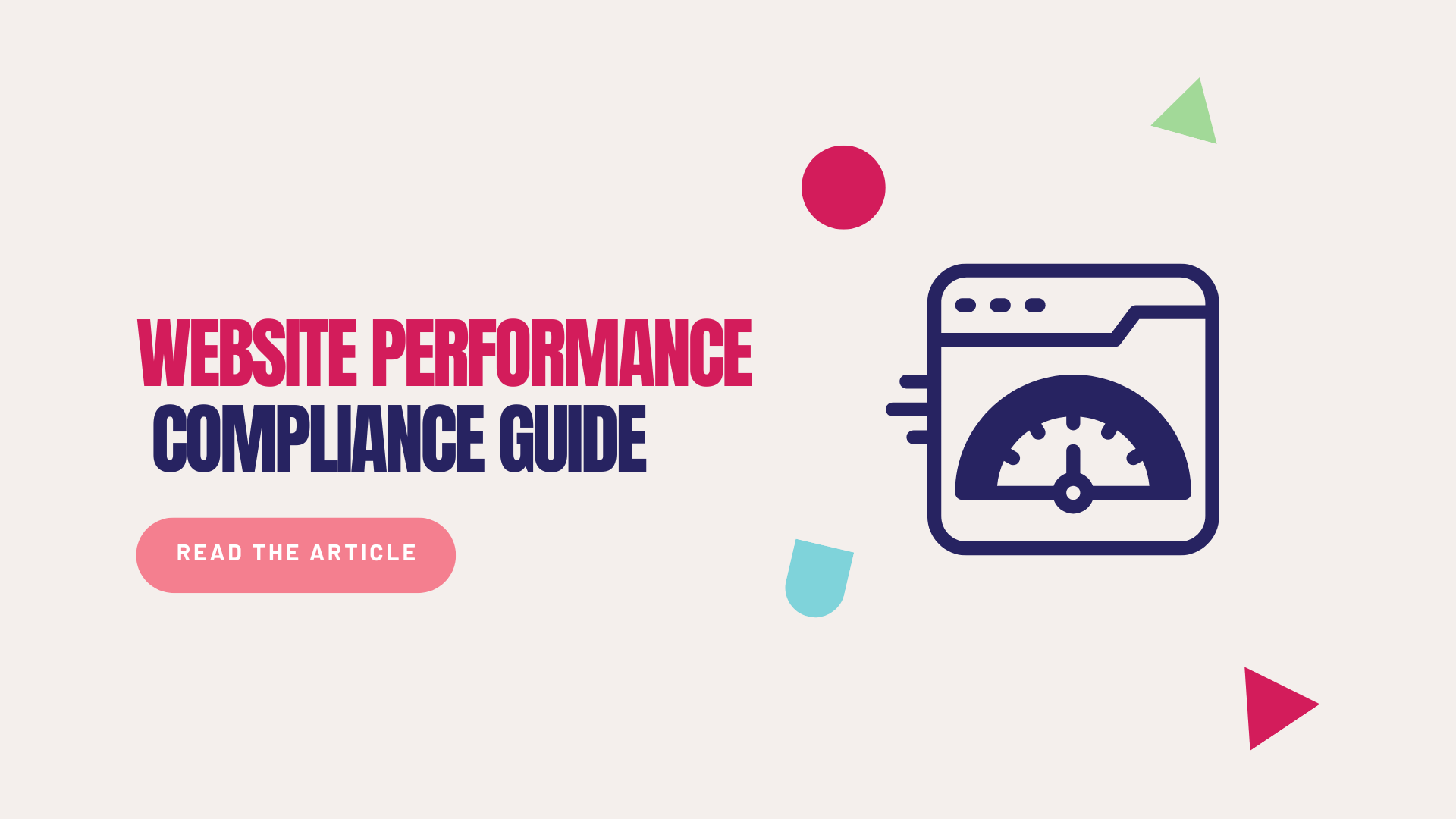Website performance compliance is a set of guidelines that help businesses deliver a seamless user experience.
Read on to discover how to optimize your website and deliver an efficient and secure user experience.
Table of Contents
What is Website Performance Compliance?
Website performance compliance encompasses various elements, including loading speed, mobile optimization, server efficiency, security, and user experience.
These components are interconnected and collectively contribute to the overall performance and credibility of your site.
Regular monitoring, efficient coding practices, and adherence to web standards are crucial in maintaining optimal performance and ensuring that your site remains accessible, fast, and secure for all users.
Create a fully optimized digital experience with Digital Spice.
Request a Free Proposal →
Why Do You Need Website Performance Compliance?
The significance of site performance extends beyond user satisfaction. Search engines like Google prioritize fast and efficient websites, rewarding them with higher rankings.
Furthermore, regulatory frameworks, such as the General Data Protection Regulation (GDPR) and the Americans with Disabilities Act (ADA), impose specific requirements that directly impact website performance.
Failing to comply with these standards can result in legal penalties, reduced visibility, and loss of user trust.
This operating plan outlines a structured approach to achieving and maintaining site performance compliance, emphasizing the importance of proactive measures in optimizing website functionality and reliability.
Request a website performance audit with Digital Spice.
Website Performance Best Practices
Achieving optimal website performance requires a strategic approach. By implementing these key practices, you can significantly enhance your site’s speed, security, and overall user experience.
- Regular Performance Audits
- What to Do: Conduct regular performance audits using tools like Google Lighthouse, GTmetrix, or WebPageTest to assess various performance metrics.
- Why It’s Important: Regular audits help identify and rectify performance issues, ensuring your site consistently meets performance standards and provides a smooth user experience.
- Optimize Loading Speed
- What to Do: Implement strategies to optimize loading speed, such as compressing images, minifying CSS and JavaScript files, and leveraging browser caching.
- Why It’s Important: Fast loading times enhance user satisfaction, reduce bounce rates, and improve search engine rankings, which are critical for attracting and retaining users.
- Implement Content Delivery Networks (CDNs)
- What to Do: Use CDNs to distribute your website’s content across multiple servers worldwide, reducing latency and improving load times for users regardless of their location.
- Why It’s Important: CDNs ensure quick content delivery, providing a better user experience and reducing the load on your primary server.
- Mobile Optimization
- What to Do: Ensure your website is fully optimized for mobile devices by using responsive design techniques and optimizing mobile-specific performance factors.
- Why It’s Important: A significant portion of web traffic comes from mobile devices. Mobile optimization is crucial for user experience and is also a factor in search engine rankings.
- Efficient Coding Practices
- What to Do: Follow efficient coding practices such as clean, modular code and avoiding unnecessary code bloat.
- Why It’s Important: Efficient coding enhances site performance, reduces load times, and simplifies maintenance and updates.
- Monitor Uptime and Downtime
- What to Do: Use monitoring tools to track website uptime and promptly address any downtime issues.
- Why It’s Important: Consistent uptime ensures your site is always available to users, preventing loss of traffic and potential revenue.
- Optimize Server Performance
- What to Do: Regularly update and maintain your web server, optimize database queries, and consider using faster web servers like Nginx or LiteSpeed.
- Why It’s Important: Efficient server performance directly impacts the speed and reliability of your website, contributing to overall user satisfaction.
- Implement Security Measures
- What to Do: Ensure your site is secure by implementing HTTPS, regularly updating software, and using security tools to prevent attacks.
- Why It’s Important: Security measures not only protect user data but also contribute to site performance by preventing malicious activities that can degrade performance.
- User Experience (UX) Testing
- What to Do: Conduct regular UX testing to identify and address any performance-related issues that affect the user experience.
- Why It’s Important: A seamless user experience is crucial for retaining users and ensuring that your site meets performance expectations.
- Adhere to Web Standards
- What to Do: Follow web standards and guidelines set by organizations like W3C to ensure your site is built and maintained using best practices.
- Why It’s Important: Adhering to web standards ensures compatibility across different browsers and devices, improving overall site performance.
Ready to Create a High-Performance Website?
Digital Spice is a creative digital agency specialized in planning, designing, and building fully optimized digital experiences.
Contact us to request a free consultation and proposal for your project at [email protected] or click here.
Let’s get digital!








